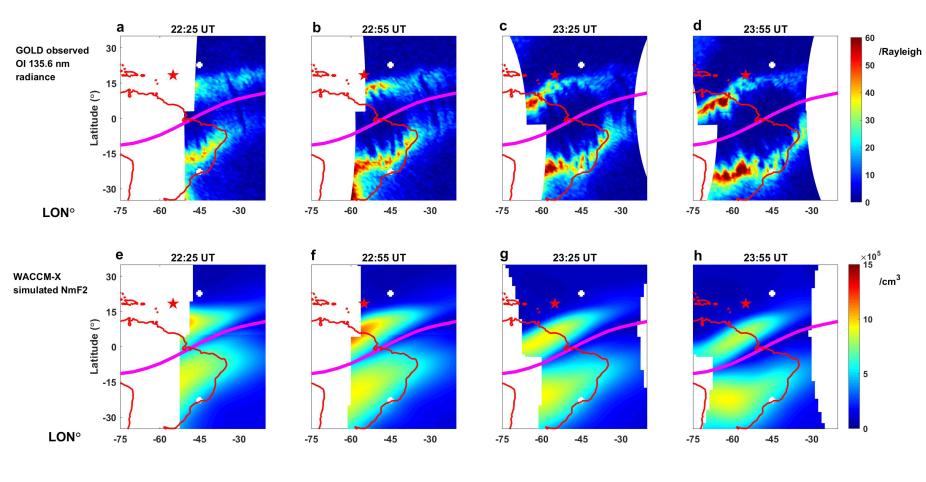The Global-scale Observation of Limb and Disk (GOLD) mission observed distinct post-sunset, hemispherically asymmetric evolution of the equatorial ionization anomaly between 40° and 50°W on 19 November 2018, with the southern crest shifting poleward but the northern crest remaining in the same latitude region. The Whole Atmosphere Community Climate Model-eXtended captured this phenomenon. Diagnostic analysis revealed that this asymmetric evolution was due to the hemispheric asymmetry in plasma transport by E × B drifts and neutral winds. In the Northern hemisphere, northward neutral wind transport dominated around sunset (20 UT near 45°W), causing the crest to be at lower altitudes and decay faster. After pre-reversal enhancement (PRE) occurred at 20 UT in the northern hemisphere, E × B and neutral wind transport largely balanced each other, and the crest remained in the same latitude region. In the southern hemisphere EIA crest, PRE occurred around 1 hr later than the one in the north. The northward neutral wind transported the plasma to higher altitudes with less recombination. E × B transport augmented the neutral wind transport after 21 UT, lifting and pushing the crest poleward. The magnetic field configuration (large declination) and the resultant occurrence time difference in PRE between 40°W and 50°W not only play critical roles in the asymmetric evolution of the two crests, but also makes it possible for this phenomenon to be observed in the GOLD field-of-view. Link

Latitude-longitude distribution of (a–d) Global-scale Observation of Limb and Disk observed OI 135.6 nm radiance and (e–h) Whole Atmosphere Community Climate Model-eXtended simulated NmF2 between 75°W and 20°W, 35°S and 35°N on 19 November 2018 with coast line (red) plotted on. The black dot stands for the location of Cachoeira Paulista (CP) (22.7°S, 45°W). The pink line stands for the dip equator.